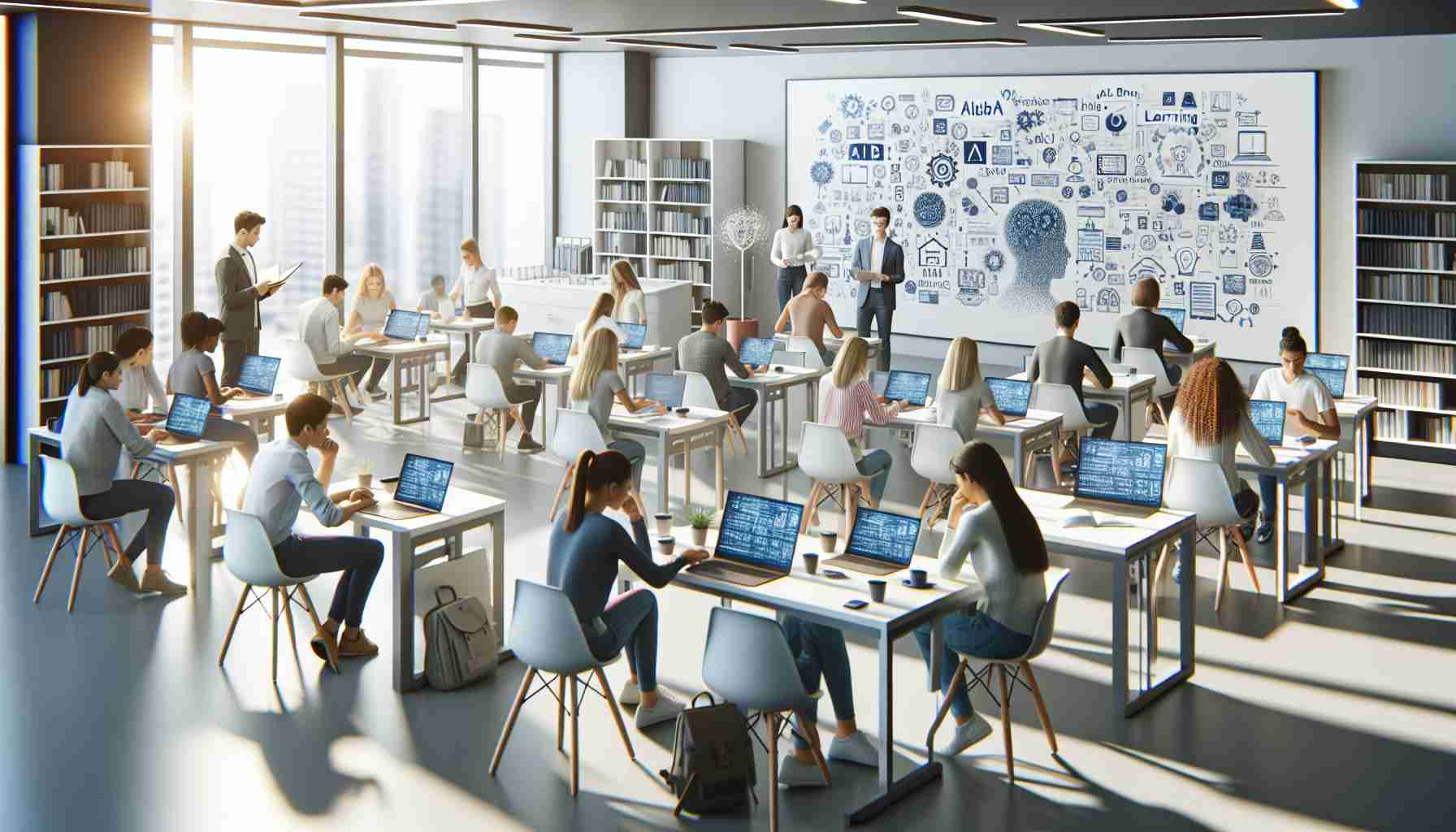
With the new school year approaching, teachers across the country are facing an unprecedented challenge: whether or not to use artificial intelligence (AI) in the classroom. This issue has sparked widespread debate, particularly concerning the potential impact of AI on education.
Artificial Intelligence: The New "Encyclopedia"?
Ludrick Cooper, an eighth-grade teacher from South Carolina, once strongly opposed the use of AI in the classroom. However, he has recently begun to change his perspective. He compares AI to a "new encyclopedia," suggesting that it can provide students with a wealth of information and knowledge just like an encyclopedia would. This shift in viewpoint highlights AI's potential in education, especially in enhancing classroom interaction and helping students with different needs.
The Potential of AI in the Classroom
AI can indeed bring many benefits to the classroom. First, it can make learning more engaging and interactive. With AI, teachers can easily provide personalized learning resources to students. For students with visual impairments or learning disabilities, AI can offer customized tools to help them better understand and master knowledge.
In addition, AI can assist students in obtaining information more quickly, whether through automated learning recommendation systems or real-time feedback on course content. For teachers, AI tools can ease their workload, allowing them more time to focus on students' individual differences and development.
The Concerns of AI
However, the use of AI is not without controversy. Experts are generally concerned that the widespread use of AI could exacerbate educational inequality. Some schools may not have the resources to implement these technologies, potentially putting students in poorer areas at a further disadvantage. Moreover, AI might affect students' mental health, as over-reliance on AI could deprive students of opportunities for collaboration with peers, ultimately affecting their social skills.
More seriously, the proliferation of AI could make it easier for students to cheat. Some students might use AI tools to directly obtain answers to assignments, which not only hinders their true learning but also undermines the fairness of the education system.
Sarah Howarth, an associate professor of special education at the University of Maine, compares AI to fire. She notes that when humans first discovered fire, some marveled at its wonders, while others feared its dangers. AI is in a similar position—it brings immense opportunities but also comes with potential risks.
Innovations in Educational Tools
In response to these concerns, some tech companies and educational platforms are developing AI tools specifically designed for the classroom. For example, OpenAI recently launched a "Learning Mode" feature, which provides step-by-step guidance for students on their assignments, rather than just giving them the answers. This tool aims to help students better understand the learning material, rather than merely relying on AI to solve problems.
Additionally, OpenAI has partnered with Instructure, the parent company of the Canvas platform, to introduce a new tool called "LLM-Enabled Assignment." This tool helps teachers create AI-based courses while tracking students' progress. Leah Belsky, the Vice President of Education at OpenAI, stated that these collaborations are crucial to ensuring that AI can truly benefit students, teachers, and educational institutions.
Differing Views Among Teachers
While the use of AI in education is gradually expanding, not all teachers are optimistic about this development. Matthew Rascoff, the Vice Provost for Digital Education at Stanford University, expresses concerns about these new tools. He believes that these tools could diminish the social aspect of education because AI can only help one student at a time. Classroom interaction and collaboration between students are crucial for cultivating social responsibility and teamwork skills.
Similarly, Lauren Monaco, a preschool teacher in New York City, is cautious about the use of AI in the classroom. She argues that teaching is not just about the "input-output" of information; it involves deep interaction between teachers and students. She worries that AI might encourage students to rely on "shortcuts," hindering their deeper understanding of knowledge.
However, some education experts believe that the widespread use of AI is inevitable. Robin Lake, Director of the Center for Reinventing Public Education at Arizona State University, points out that AI has already permeated many aspects of our lives. When students enter the workforce, they will inevitably encounter this technology. Therefore, educators should actively prepare students with the necessary skills and literacy to succeed in the future "AI economy."
The use of AI in education presents both opportunities and challenges. It can make education more personalized and efficient, and even assist students with special needs. However, it may also bring negative consequences, such as exacerbating educational inequality and impacting students' mental health. Therefore, educators must use this technology cautiously and explore ways to maximize its benefits while mitigating its potential drawbacks. The key challenge lies in how to balance technology with traditional education, an issue that will require ongoing discussion and practice.

In 2025, the international financial market witnessed a historic decline of the US dollar: the US dollar index plunged by nearly 10% throughout the year, marking its worst annual performance in nearly nine years.
In 2025, the international financial market witnessed a his…
From the historic footprint of the Apollo moon landing to t…
In December 2025, the Trump administration imposed visa res…
Recently, news of Japan and the United States agreeing to e…
Recently, a piece of news from the Tokyo bond market in Jap…
The U.S. economy in December 2025 resembles a meticulously …